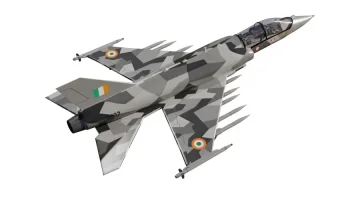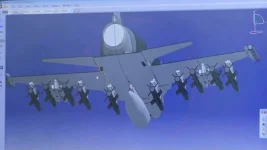- Views: 3K
- Replies: 17
Hindustan Aeronautics Limited (HAL) is undertaking a significant redesign of its proposed Hindustan Lead-in Fighter Trainer (HLFT-42), incorporating feedback from the Indian Air Force (IAF) and expanding its potential roles beyond advanced pilot training.
The aircraft, initially presented at Aero India 2023, is now envisioned as a versatile platform capable of serving as a light combat aircraft and a command center for unmanned aerial systems.
The HLFT-42, a next-generation supersonic trainer concept, was notably absent from Aero India 2025. HAL officials explained that the intervening period has been dedicated to refining the aircraft's design and capabilities based on detailed discussions with the IAF.
This includes improvements to aerodynamics, structural design, avionics, and weapons integration. Rigorous wind tunnel testing and simulations are being conducted to ensure the aircraft meets stringent operational requirements for both training and combat scenarios.
The redesign addresses the IAF's comprehensive pilot training strategy. While the IAF plans to induct the Intermediate Jet Trainer (IJT-36) "Yashas" for Stage-II training, replacing the aging HJT-16 Kiran, the HLFT-42 is being positioned for Stage-III training.
This would see it either replace or supplement the Hawk 132 Advanced Jet Trainers (AJTs). Unlike the Hawk, the HLFT-42 is being designed with advanced sensors, radars, and combat capabilities, better preparing pilots for next-generation fighter aircraft.
Beyond training, the IAF envisions a significant combat role for the HLFT-42. HAL is developing the aircraft with a dual-role capability: a trainer during peacetime and a combat-ready platform during wartime. This versatility is seen as a cost-effective solution for the IAF, providing a multi-role aircraft that can adapt to changing demands.
The HLFT-42 is being designed to carry advanced weaponry, including close-combat missiles like the ASRAAM and beyond-visual-range missiles such as the Astra, making it a viable light combat aircraft for supporting frontline operations.
A key element of the HLFT-42's evolution is its potential role as a "mothership" for the Combat Air Teaming System (CATS) Warrior, a loyal wingman unmanned combat air vehicle (UCAV) being co-developed by HAL and NewSpace Research & Technologies. The CATS Warrior is designed to operate alongside manned aircraft, enhancing their capabilities in contested airspace.
While the Tejas Mk1A was initially considered for this mothership role, HAL now suggests the HLFT-42 could be a suitable alternative, leveraging its planned advanced avionics and payload capacity.
This concept aligns with the growing global interest in manned-unmanned teaming (MUM-T). MUM-T concepts involve integrating manned and unmanned platforms to enhance situational awareness, improve lethality, and reduce risk to pilots.
HAL's redesign includes upgrades to the HLFT-42's communication systems, sensor suite, and software to ensure seamless integration with the CATS Warrior, creating a versatile combat trainer capable of shifting roles as needed.
Despite the advancements, the HLFT-42 program faces challenges. Engine selection remains a critical decision, with options including the GE F414 and the indigenous Kaveri engine being evaluated. The chosen engine must provide sufficient thrust for supersonic performance and combat operations.
Industry analysts suggest that potential delays in engine development, a common issue in aerospace projects, could push the HLFT-42's operational deployment to the early 2030s.


